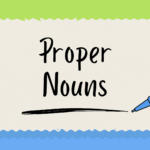Countable nouns are the building blocks of English language that help us quantify things. In this article, we’ll break down what countable nouns are, check out some everyday examples, and understand the key differences between countable and uncountable nouns.
What are Countable Nouns?
Countable nouns are the ones you can count – pretty straightforward, right? They can be singular or plural, and we use them with numbers or words like “a” and “an” to specify the quantity.
For Example:
- Singular: “apple”
- Plural: “apples”
List of Common Countable Nouns:
Let’s keep it practical by looking at common examples across different categories:
| Category | Countable Nouns |
|---|---|
| Animals | dog, cat, elephant, giraffe |
| Fruits | apple, banana, orange, strawberry |
| People | person, student, teacher, scientist |
| Objects | book, table, chair, laptop |
| Places | city, country, park, restaurant |
| Vehicles | car, bicycle, bus, airplane |
This list gives you a snapshot of the types of countable nouns you might encounter.
Countable Nouns vs. Uncountable Nouns:
Countable nouns, like “dog” or “book,” are tangible items you can count individually. They have singular and plural forms and are used with numbers. In contrast, uncountable nouns, such as “water” or “knowledge,” can’t be counted separately and lack plural forms. Instead of numbers, you use terms like “some” or “much” with uncountable nouns.
Let’s make it clear how countable nouns differ from uncountable ones:
Countable Nouns:
- You can count them.
- They have singular and plural forms.
- You use numbers or “a” and “an” with them.
- Examples: “two dogs,” “an apple,” “five books.”
Uncountable Nouns:
- Can’t be counted separately.
- No plural form.
- Use “some” or “much” instead of numbers.
- Examples: “water,” “knowledge,” “music.”
Note: When you’re talking about everyday things like pets, fruits, or people, you’re dealing with countable nouns. But if it’s something less tangible, like enjoying music or having knowledge, that’s uncountable.
Examples for Better Grasp:
Countable Nouns:
- “I have three books on my shelf.”
- “She adopted two cats from the shelter.”
- “There are seven students in the classroom.”
Uncountable Nouns:
- “He drank some water after the workout.”
- “She possesses a lot of knowledge about art.”
- “We enjoyed listening to beautiful music.”
Frequently Asked Questions (FAQs) About Countable Nouns:
Q1: How do countable nouns differ from uncountable nouns?
The key difference lies in quantifiability. Countable nouns can be counted as individual units, have singular and plural forms, and can be used with numerical values or determiners like “a” and “an.” In contrast, uncountable nouns cannot be counted separately, lack a plural form, and do not take numerical values or specific determiners.
Q2: Are there any rules for determining if a noun is countable or uncountable?
While there’s no strict rule, a general guideline is that concrete, tangible items are often countable, whereas abstract concepts or substances are typically uncountable. However, there are exceptions, and familiarity with common usage is key.
Q3: Can countable nouns become uncountable in certain contexts?
Yes, some nouns may function as both countable and uncountable depending on the context. For example, “water” can be uncountable (as a substance) or countable (referring to individual bottles or glasses of water).
Q4: Is there a plural form for all countable nouns?
Most countable nouns have a distinct plural form, but there are irregular nouns that don’t follow the typical pattern. For example, “child” becomes “children,” and “ox” becomes “oxen.”
Conclusion:
In conclusion, getting a grip on countable nouns is key to using English effectively. Recognizing whether a noun is countable or uncountable adds precision to your language skills. The examples and breakdown provided here aim to make this linguistic concept a bit more down-to-earth. Next time you encounter a noun, just consider whether you can count it or not.


